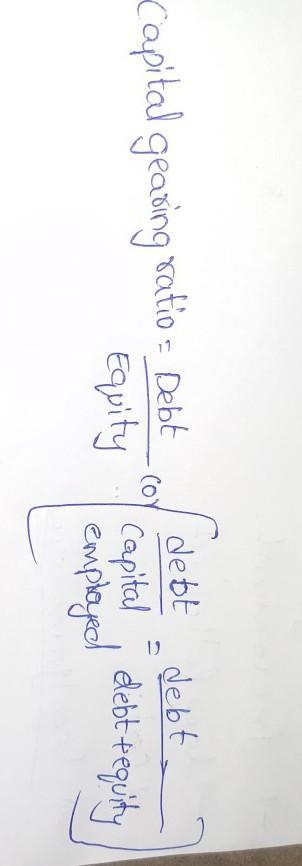Compound Interest Formulas, Tricks And Questionst Formulas, Tricks And Questions
Индикатор Aroon для торговли на форекс и его сигналы
July 3, 2020Orbex: Раскройте свой потенциал в Forex с вознаграждением кэшбэк
May 17, 2021
This tutorial will demonstrate various ways to calculate compound interest in Excel and Google Sheets. When it comes to accumulating assets, the magic of composition can be very beneficial. The previous method was to create a stock option and start saving money. The more money you save, the more money you get through compound interest. As you can see, the values have been put into the formula and it can be determined what will be the compound interest after completing the calculations.
What is the formula of compound interest with example?
The monthly compound interest formula is given as CI = P(1 + (r/12) )12t – P. Here, P is the principal (initial amount), r is the interest rate (for example if the rate is 12% then r = 12/100=0.12), n = 12 (as there are 12 months in a year), and t is the time.
In mathematics, the accumulation functions are often expressed in terms of e, the base of the natural logarithm. This facilitates the use of calculus to manipulate interest formulae. The best way to take advantage of compound interest is through saving and investing. Even though we’ve used small numbers here, you can see how the farther out you go, the more compound interest nets you — and the more it outstrips simple interest. In other words, with compound interest, you earn interest on previously earned interest.
Calculate Compound Interest in Excel
Frequency of compounding – it refers to the times the plant bears fruit, i.e., it is the number of times you pay interest in a year (say monthly, quarterly, half-yearly, or annually). The effective annual rate is the total accumulated interest that would be payable up to the end of one year, divided by the principal sum. For example, monthly capitalization with interest expressed as an annual rate means that the compounding frequency is 12, with time periods measured in months. The compounding frequency is the number of times per year (or rarely, another unit of time) the accumulated interest is paid out, or capitalized (credited to the account), on a regular basis. The frequency could be yearly, half-yearly, quarterly, monthly, weekly, daily, or continuously (or not at all, until maturity).
How To Calculate Dividend Yield – Forbes Advisor INDIA – Forbes
How To Calculate Dividend Yield – Forbes Advisor INDIA.
Posted: Fri, 28 Apr 2023 07:00:00 GMT [source]
You can set a goal and use the calculator to know how to achieve it through mutual fund investments. After the first month, Ajay’s bank account was credited with ₹1200 on the current balance of ₹30,000. compound interest formula example india This interest was not drawn on the principal amount (₹30,000) but on the interest plus the principal amount, which was ₹31,200. In the third month, he earned an interest amount of ₹1297, and so on.
How to Get a Mortgage Loan
The bank won’t give the earned interest back to you, instead they add it to your principal investment. This increased amount becomes the principal for the next time period (compounding period) and also earns interest. In other words, you earn interest not only on the principal amount, but also on the interest earned in each compounding period. In very simple terms, compound interest is the interest earned on interest. More precisely, compound interest is earned on both the initial deposit (principal) and the interest accumulated from previous periods. Now, let us look at a simple example to understand it better and to see how compounding benefits you.

At regular intervals, the interest so far accumulated is clubbed with the existing principal amount and then the interest is calculated for the new principal. The new principal is equal to the sum of the Initial principal, and the interest accumulated so far. Investors prefer compound interest as the total interest earned on the deposit is relatively higher. Getting started only requires an initial $10 investment to explore the opportunities.
Best Compound Interest Accounts: Short-Term Investments
At the end of the third year, $130 — compared to $133.10 in the compounded interest account. For example, say you have $100 in a savings account, and it earns interest at a 10% rate, compounded annually. At the end of the first year, you’d have $110 ($100 in principal + $10 in interest). At the end of the second year, you’d have $121 (110 in principal + 11 in interest).
Please feel free to share any thoughts in the comments section below. I’ve received a lot of requests over the years to provide a formula for compound interest with monthly contributions. Now that we’ve looked at how to use the formula for calculations in Excel, let’s go through a step-by-step example to demonstrate how to make a manual
calculation using the formula… Riley Adams is a licensed CPA who worked at Google as a Senior Financial Analyst overseeing advertising incentive programs for the company’s largest advertising partners and agencies. Previously, he worked as a utility regulatory strategy analyst at Entergy Corporation for six years in New Orleans.
Compound Interest: Formulas & Tricks
These types of investments allow you to buy into more extensive portfolios that give your money exposure to many different properties with just one purchase. During the term length, you gain interest on the principal at a rate usually higher than that of a high-yield savings account. If you take money out during the term length, you’ll have to pay a penalty, so it isn’t wise to invest money you anticipate needing in the near future. Certificates of Deposit (CDs) are offered by most banks and credit unions and are easy to open and understand. CDs are almost risk-free and insured in the United States for up to $250,000.
Below, we highlight one such option from EquityMultiple, a crowdfunding real estate platform focused largely on commercial real estate investments. Alternative investments is a catch-all term for any investment that doesn’t fall into the categories of stocks, bonds, or cash. Some MMAs come with checkbooks, which can be an excellent way to access your money if you need it quickly. These checkbooks are a key difference between a MMA and a high-yield savings account. If you want to access money in your high-yield savings account, you usually have to transfer it to a checking account to use it. Keep in mind that some CDs might have a lower interest rate than inflation and if that happens you may lose money.
What is 1 example of compound interest?
For example, if you deposit $1,000 in an account that pays 1 percent annual interest, you'd earn $10 in interest after a year. Thanks to compound interest, in Year Two you'd earn 1 percent on $1,010 — the principal plus the interest, or $10.10 in interest payouts for the year.
